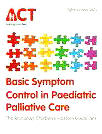Leukaemia "stem cells" can lie dormant in the body for a decade or more after a child achieves remission before being reactivated and causing a relapse, a new study shows
Senior author Professor Mel Greaves from The Institute of Cancer Research (ICR) cautioned that the findings should not unduly concern parents whose children have previously suffered acute lymphoblastic leukaemia (ALL) as the leukaemia returning after very many years of remission is rare. Also, the late relapse is usually genetically similar to the original cancer and the same treatment is likely to put them into remission once again.
Professor Greaves: "Some types of treatment eradicate the leukaemic cells, but do not kill all the leukaemic stem cells. Years later, if the patient is unlucky enough to be exposed to another trigger, the cancer can start developing again. The good news is that we believe some new schedules of treatment for leukaemia may also kill the stem cells, so in future patients may not have this risk of relapse."
In 2008, Professor Greaves and his team at the ICR confirmed the existence of the leukaemia stem cell, which develops from a genetic mutation when the patient is still in the womb.
The mutation – the fusion of the TEL (ETV6) and AML1 (RUNX1) genes – generates pre-leukaemic cells that grow in the bone marrow as a silent time bomb, but require other factors to convert them into leukaemia. Evidence suggests that the mutation may be present in as many as 1 in a 100 newborns, but only about 1 in a 100 of those children with the mutation then go on to develop ALL. These triggers are thought to include acquiring a common childhood infection and further genetic mutations.
In the latest study, supported by Leukaemia & Lymphoma Research and The Kay Kendall Leukaemia Fund and published in the current edition of the journal Blood, the scientists scanned the DNA of cancer samples taken from 21 patients at first diagnosis and then at relapse. All the patients had the ETV6-RUNX1 fusion and were aged on average 4.5 years at diagnosis, with first relapse up to ten years later.
For each patient, they found an average of around eight different mutations, known as copy number alternations, at diagnosis and around 11 at relapse. Some of these were thought to be unimportant "passenger" mutations, but a number of "driver" mutations – thought to be directly involved in cancer development – were identified due to their frequency among the patients or previously known role in ALL development. By analysing driver mutations present at both stages, they confirmed the cancer cells causing relapse were derived from cells present at first diagnosis, in most cases at low levels.
For one patient, they performed backtracking analysis using a technique called fluorescence in situ hybridization (FISH) and identified a cancer cell present at low levels at diagnosis (0.4%) whose genotype actually matched the dominant cancer cells (79.8%) observed at relapse ten years later.
The study findings also raise the possibility that patients at risk of the cancer returning could be identified by using sensitive molecular screening methods to look for persisting stem cells.
"It may be possible to examine patients once they have finished treatment - usually two to three years after diagnosis - and determine if they still have a reservoir of leukaemic stem cells and therefore potential for relapse," lead author Frederik van Delft from the ICR says.


 This resource provides doctors and nursing staff with an all-in-one reference tool for symptom management and children's palliative care medicines
This resource provides doctors and nursing staff with an all-in-one reference tool for symptom management and children's palliative care medicines